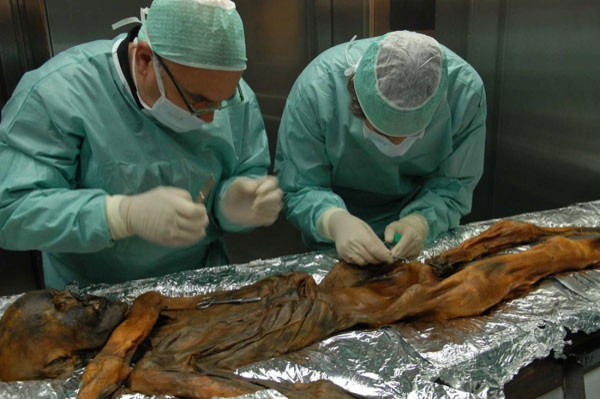5,300-Year-Old Ice Mummy May Have Earliest Case of Lyme Disease

The 5,300-year-old ice mummy named Ötzi, discovered preserved under ice in the Alps in 1991, suffered from what appears to be the earliest known case of Lyme disease, genetic analysis revealed.
Researchers found genetic material from the bacteria responsible for Lyme disease in Ötzi. after they took a sample of his hip bone in order to look at his genetic makeup. Researchers found evidence of Borrelia burgdorferi, the only bacteria known to cause Lyme disease.
This is the oldest evidence for [Lyme disease] and proof that this infection was already present 5,000 years ago, Carsten Pusch, lead researcher and an assistant professor of molecular genetics at Eberhard Karls University at Tübingen in Germany, told Science Daily.
Lyme disease affects over 20,000 people every year, according to the Centers for Disease Control and Prevention. It is transmitted by tick bites and causes a telltale bull's eye rash and flulike symptoms. It can also lead to joint, heart and nervous system problems if left untreated.
The earliest mention of Lyme disease dates back to a European study from 1883. The disease was first found in the United States in the 1970s, according to the National Institutes of Health.
The genetic makeup of Ötzi revealed a much more complete picture of the ice mummy. It showed that he was genetically predisposed to cardiovascular disease despite the fact that he was not overweight and would have exercised frequently. Hardening of the arteries, a symptom of heart disease, was also seen.
The evidence that such a genetic predisposition already existed in Ötzi's lifetime is of huge interest to us, Albert Zink, a researcher who worked on Ötzi and head of the Institute for Mummy Research, told Science Daily. It indicates that cardiovascular disease is by no means an illness chiefly associated with modern lifestyles. We are now eager to use these data to help us explore further how these diseases developed.
The findings also revealed that Ötzi had brown eyes and hair, blood type O and was lactose intolerant.
The study was published online in Nature Communications on Tuesday.
Researchers have been able to piece together much about Ötzi since his initial discovery. Tests revealed that Ötzi was 45-years-old, 5 and a half feet tall (1.65 meters) and weighed 110 pounds (50 kg) at the time of his death.
Ötzi had an arrowhead lodged in a left shoulder when he died. Researchers believe that he died as a result of this wound coupled with the cold temperatures. It is likely the wound would have been fatal even if Ötzi had access to modern medicine, according to a 2007 article by The Guardian.
Ötzi is on display at the South Tyrol Museum of Archaeology in Italy.
© Copyright IBTimes 2024. All rights reserved.





















